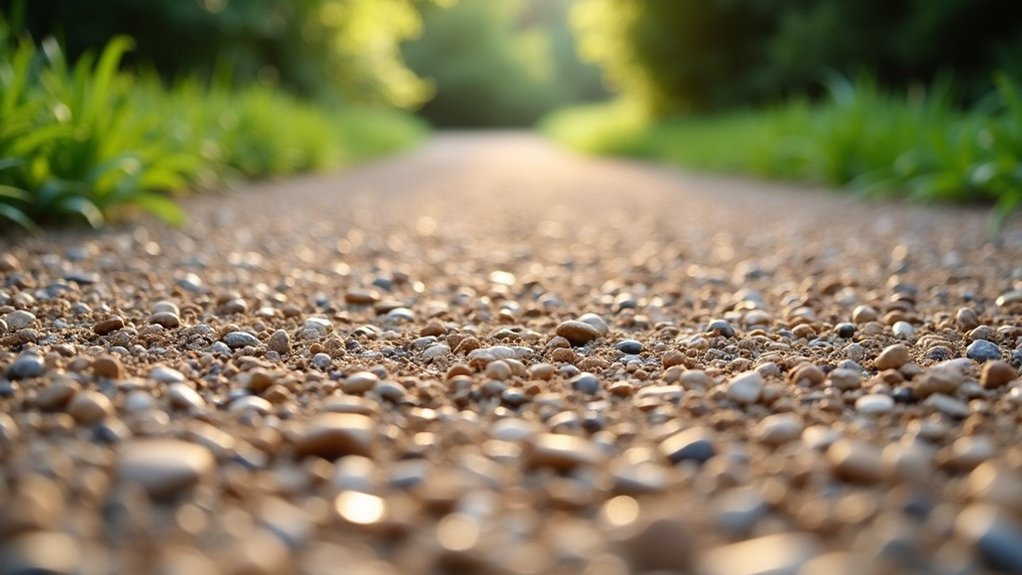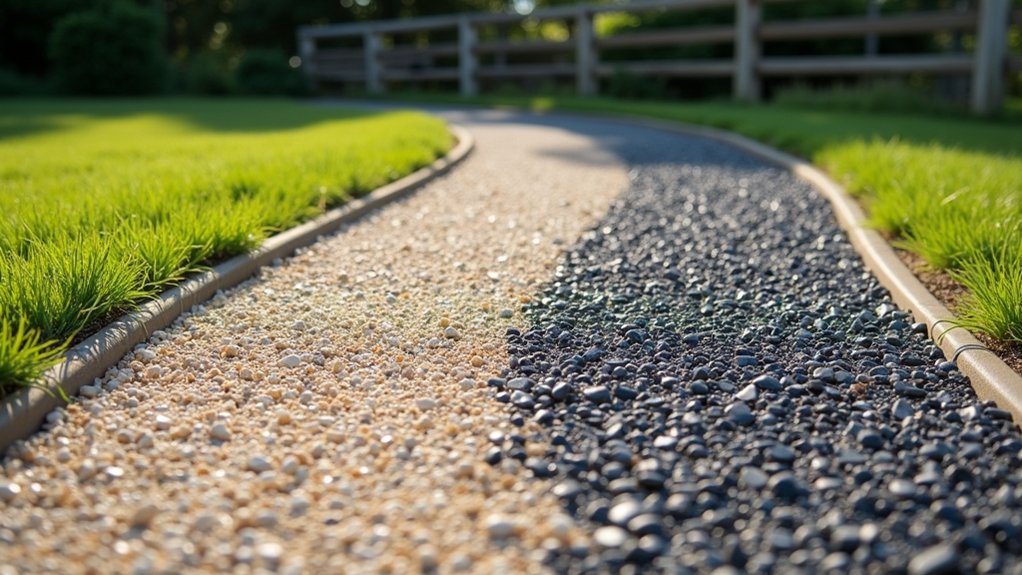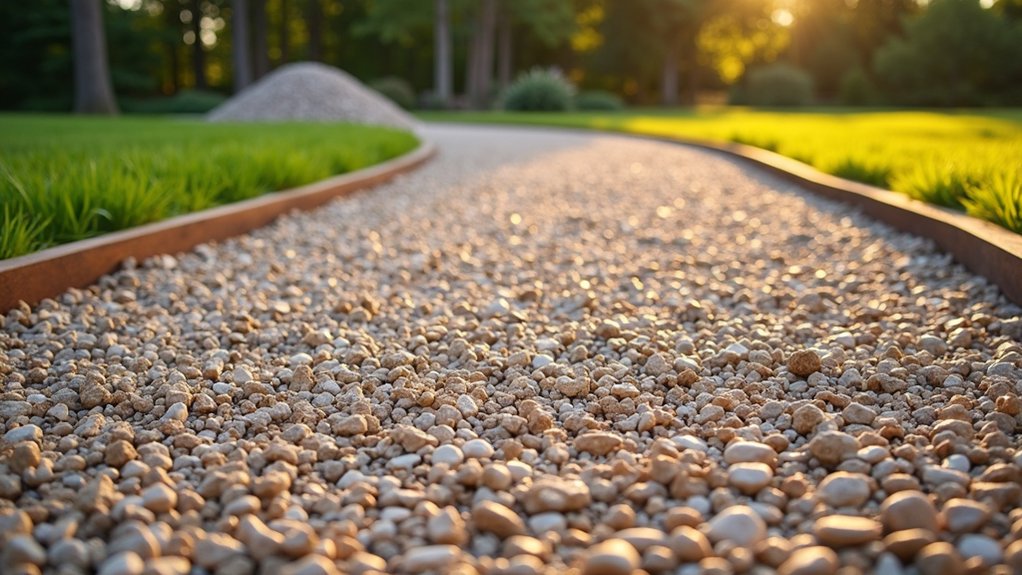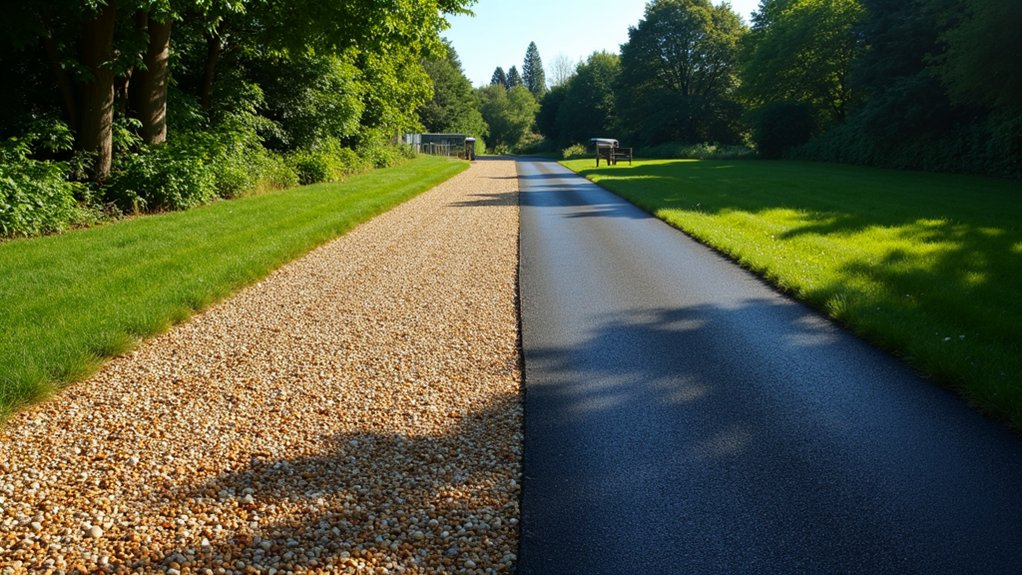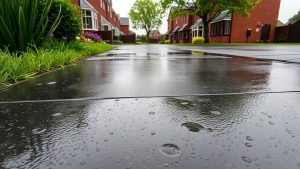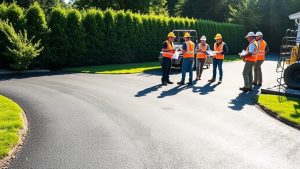Yes, gravel driveways do require a sub-base for stability and longevity. A proper sub-base helps to distribute the weight of vehicles, preventing the soil from sinking and reducing the need for repairs. Using materials like MOT Type 1 improves both compaction strength and drainage. It’s crucial to install the sub-base at the right depth and to layer it correctly. This approach ensures effective moisture management and minimises shifting. For a durable gravel driveway, consider the right materials and techniques to ensure long-lasting results.
Table of Contents
ToggleKey Takeaways
A sub-base is crucial for gravel driveways to ensure they remain stable and avoid issues like sinking or soil subsidence. Using materials such as MOT Type 1 enhances strength and durability, making the driveway last longer.
For proper installation, aim for a total depth of at least 12 to 18 inches. This layered approach supports the driveway effectively. Additionally, a well-built sub-base improves drainage, helping to direct water away and reducing erosion risks.
Regular maintenance is essential to keep drainage gaps clear and prevent fine particles from blocking water flow. A little upkeep goes a long way in maintaining your gravel driveway.
The Importance of a Sub-Base for Gravel Driveways
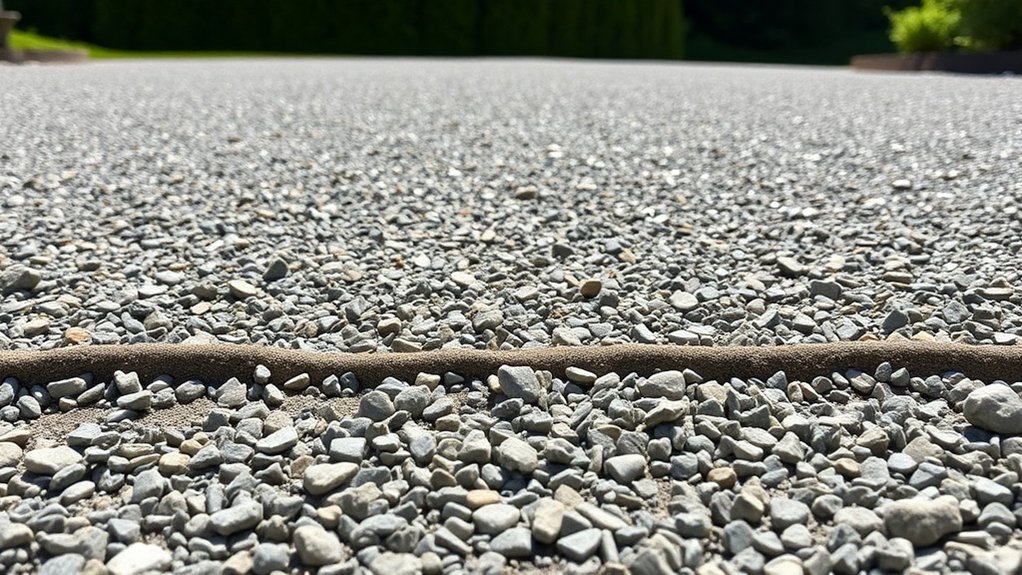
When building a gravel driveway, it’s vital to understand the importance of a sub-base for long-lasting stability. A well-installed sub-base offers several key benefits that enhance the driveway’s durability.
It helps prevent sinking and soil subsidence by evenly distributing vehicle weight, which reduces soil compaction. This stability means fewer repairs down the line, as it protects against surface deformation from traffic. Additionally, a good sub-base improves drainage by directing water away, preventing erosion that could lead to expensive fixes. Using MOT Type 1 as the sub-base material can significantly enhance compaction strength and longevity.
With a properly compacted sub-base, you’ll keep the surface level and minimise gravel displacement, ensuring your driveway remains functional and visually appealing for years. Investing in this essential layer ultimately saves you time and money on maintenance.
Recommended Materials for Sub-Base Construction
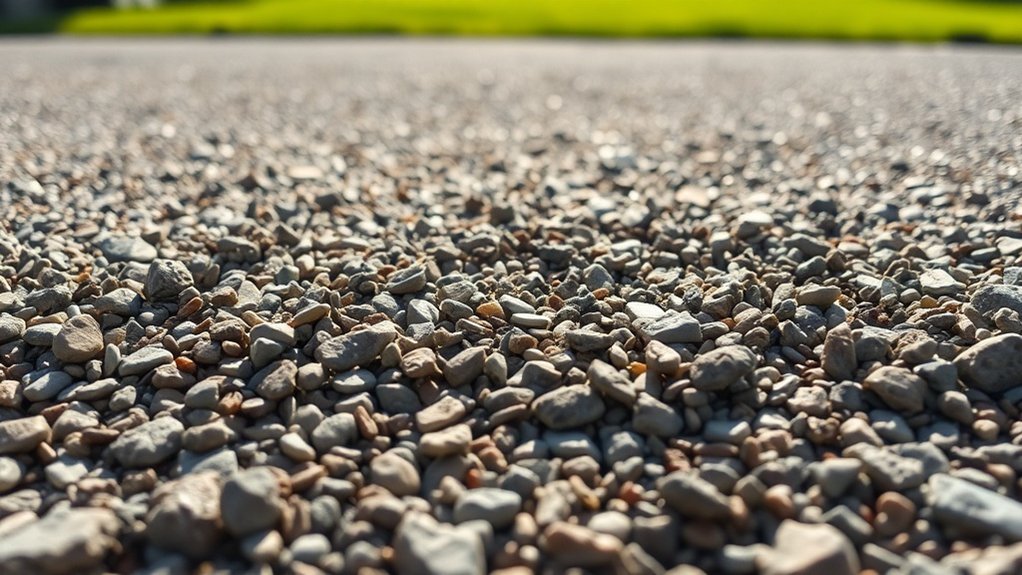
Choosing the right materials for your sub-base construction is crucial for a long-lasting gravel driveway. Here are some options to consider:
- MOT Type 1: This is a recycled aggregate made from crushed concrete. It’s excellent for compaction but has lower permeability.
- Type 32-33: These natural aggregates boast strong load-bearing capacity and compaction strength, making them ideal for areas with heavy traffic.
- Type 8: A blend of larger and smaller stones that aids drainage, providing stability and managing moisture effectively. Additionally, incorporating a geotextile membrane can help prevent sub base sinking and enhance the overall stability.
Combining recycled and natural aggregates strikes a good balance between durability and drainage. Select materials based on your driveway’s specific requirements, ensuring they support both compaction and water flow. This approach will improve the lifespan and performance of your gravel driveway.
Appropriate Depth and Layering Techniques
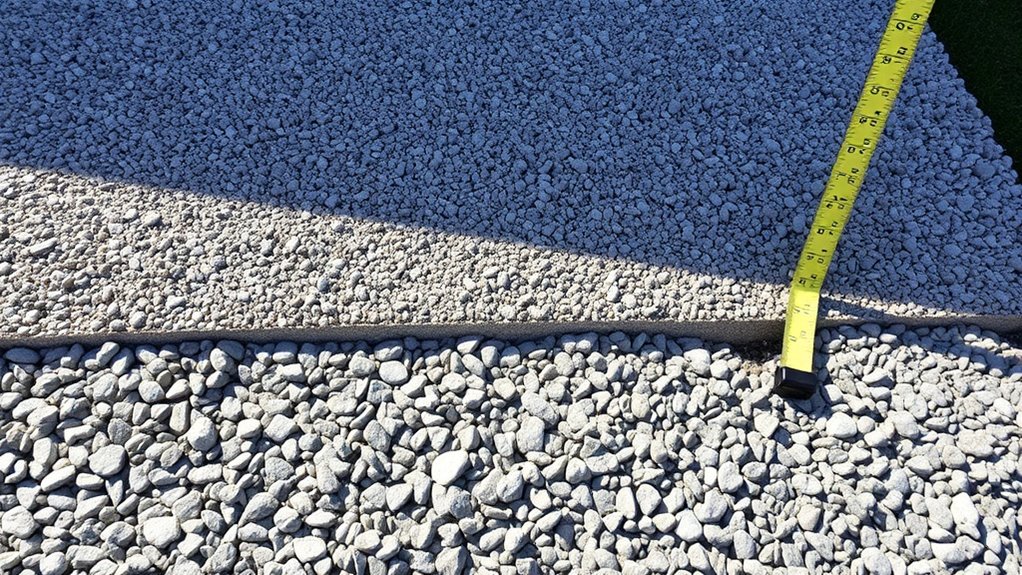
Getting the right depth and layering for your gravel driveway is key to ensuring it lasts and remains stable. Aim for a total depth of 12 to 18 inches, which should include a 6-inch compacted sub-base, a 6-inch gravel base, and a 6-inch surface layer. Use MOT Type 1 aggregate for the sub-base to ensure it stays stable. It’s crucial to compact each layer properly to avoid sinking or shifting when weight is applied. Adding a weed membrane can help improve drainage and keep the surface stable. Additionally, consider using TRUEGRID pavers for added stability and to prevent shifting when gravel is spread over them. Don’t forget to consider your local soil conditions and rainfall patterns, as these may require you to adjust the depth and layering to effectively manage water runoff and enhance durability.
Installation Process and Best Practices
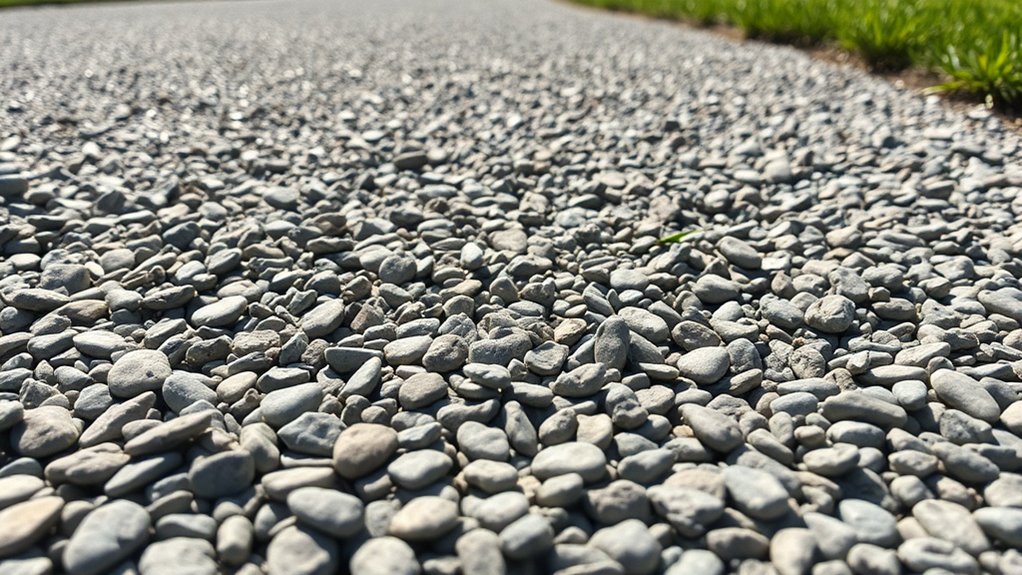
For a successful gravel driveway installation, proper depth and layering are crucial. Follow these essential steps to ensure a solid foundation:
- Site Preparation: Mark out your driveway area, excavate to a depth of 150mm to 300mm, and remove any unstable soil.
- Sub-base Installation: Place a layer of crushed stone 150mm to 200mm thick. Compact it thoroughly using heavy machinery to create a strong base.
- Weed Barrier Implementation: Lay down a weed prevention membrane and secure it with staples. This helps with drainage and stops unwanted vegetation from growing.
Drainage and Permeability Considerations
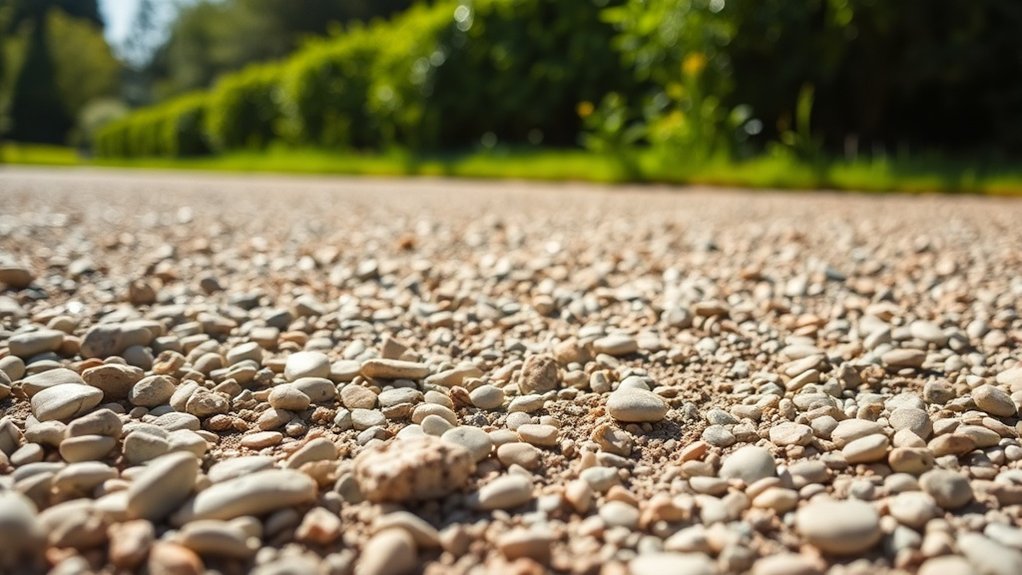
When designing a gravel driveway, it’s essential to consider drainage and permeability to ensure durability and functionality.
Gravel is naturally permeable, allowing water to seep through and reducing surface runoff. To improve drainage, choose larger, angular gravel stones that create more gaps for water to flow through.
Incorporating drainage solutions like French drains or gravel-filled trenches can help direct water away from the driveway effectively.
Regular maintenance is crucial too, as fine particles can block these gaps, reducing permeability over time.
Ensure proper grading with gentle slopes to facilitate water flow.
Frequently Asked Questions
How Long Does a Gravel Driveway With a Sub-Base Last?
A gravel driveway with a solid sub-base can last over 25 years, showcasing excellent durability. With regular maintenance, this lifespan could potentially stretch to 100 years. Keeping it well-maintained, like topping up gravel and ensuring proper drainage, can make a significant difference.
Can I Install a Sub-Base Myself?
Yes, you can install a sub-base yourself. Just ensure you pick the right materials, plan your work carefully, and grasp compaction techniques for a solid foundation for your driveway. For example, using crushed limestone or gravel can provide excellent drainage and stability.
What Are the Signs of a Failing Sub-Base?
Signs of a failing sub-base include surface cracking, uneven surfaces, and shifting gravel. Using poor-quality materials and insufficient compaction can undermine stability, resulting in drainage problems and faster wear and tear.
Is a Sub-Base Necessary for Light Vehicles?
Yes, a sub-base is essential for light vehicles. It offers crucial support by evenly distributing the vehicle’s weight, prevents sinking, and improves stability. This ensures your driveway stays durable and reduces maintenance issues in the long run. For example, without a proper sub-base, you might find your driveway developing ruts or potholes, which can be costly to fix.
How Do I Maintain a Gravel Driveway With a Sub-Base?
How can you keep your gravel driveway in good condition? Regularly rake the surface to redistribute the gravel, tackle any potholes quickly, and ensure proper drainage. This will help you make the most of your sub-base and improve the overall maintenance and lifespan of your driveway.
Conclusion
In summary, a well-built sub-base is crucial for the durability and stability of your gravel driveway. Without it, you risk facing uneven surfaces and possible washouts. By choosing the right materials, ensuring adequate depth, and following best installation practices, you can establish a solid foundation that aids proper drainage. Investing in a robust sub-base now will save you time and money on future repairs, helping your driveway stay functional and attractive for years to come.
Keen to enhance your driveway with the right gravel? Discover the best types and find out which one suits your Read more
How to enhance your gravel driveway's stability and durability? Discover key strategies that can transform your drive into a long-lasting Read more
Uncover the essential differences between gravel driveways and tarmac, and find out which option truly suits your needs best.

